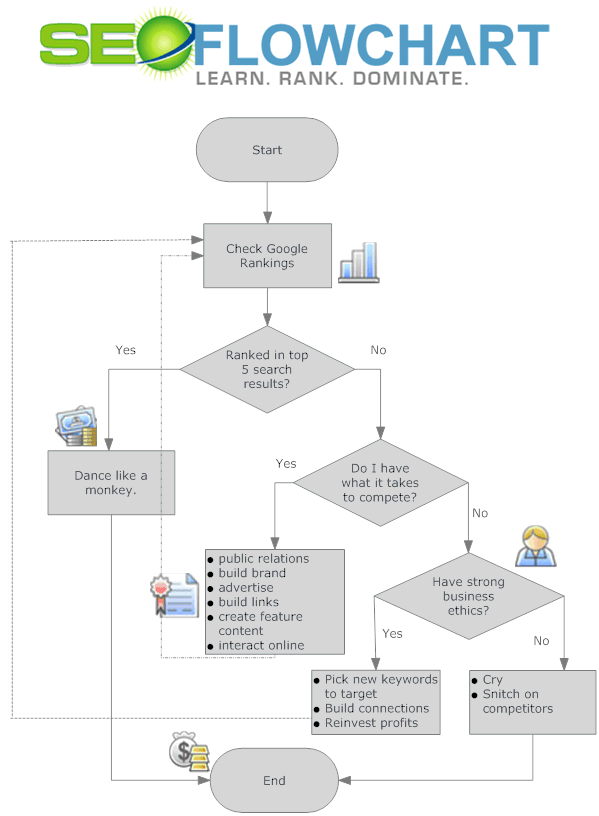Due to the ever-changing nature of the Internet, it’s hard to give specific advice on how to use the Internet in your marketing campaign. No doubt you already realize that your business website is not just another form of advertising.
The Internet has become a marketing tool in its own right. But how do you take your website from desktop to cyberspace and from cyberspace to the bank?
Here’s a smart start:
1. Hire a professional to build your website,
2. Have him make your website user friendly,
3. Maintain the website and regularly update it.
At this point, you may be thinking, Hmm, I didn’t have to come to class to learn that one. That’s something everybody already knows. I’ll just skip this lesson.
You see, nothing is more deceptive than an obvious fact. What’s more, people overlook obvious facts more quickly than any other information. That’s why we have to begin by emphasizing what you thought you already knew.
The basic principles of marketing haven’t changed in thousands of years. That’s because basic human nature hasn’t changed in thousands of years.
The only real changes have been in the tools we use for marketing.
 When your grandparents were teenagers and the first shopping malls opened, your grandparents were practicing the basic principles of Internet shopping. Actually, the basic principles of Internet shopping go back thousands of years. But let’s start with something more familiar to you.
When your grandparents were teenagers and the first shopping malls opened, your grandparents were practicing the basic principles of Internet shopping. Actually, the basic principles of Internet shopping go back thousands of years. But let’s start with something more familiar to you. Why did your grandparents go to shopping malls? They went for the same reasons you do: because they enjoyed going. Why did they stay longer in a mall than they would have stayed in a mom and pop store? Again, they stayed longer because they enjoyed it more. And, because they stayed longer, they were more likely to buy something.
From looking at our mall shopping habits, here are some of the lessons we learn about Internet shopping:
1. Potential customers have to know about the site before they can go there.
2. They have to go there before they can buy something.
3. The site must be easy to access and easy to navigate.
4. Potential customers must enjoy the site enough to want to stay awhile and to return. The longer they stay, the more likely they are to buy something. The more often they return, the more likely they are to buy something.
5. They will enjoy the site more if it’s kept interesting and if they don’t have to use much thought in navigating the site.
6. If they’re interested, relaxed, and not thinking very critically, they can be more easily nudged toward making a purchase.
Let’s take another look at the list you saw earlier:
1. Hire a professional to build your website,
1. Hire a professional to build your website,
2. Have him make your website user friendly,
3. Maintain the website and regularly update it.
Most people who want to create a website are focused on the website’s content (1.) When they think of maintaining it and regularly updating it (3.), they’re still thinking of content. What about the customer (2.) and the real purpose of the website: making sales?
You don’t need a professional to provide content for you. For that reason, many businesses building a website try to get by cheaply and use the nearest computer nerd they can find.
But content is just advertising—actually, it’s not even that much. Wouldn’t you want to hire a professional advertising agency to design your ads for you? Then you should have your website designed as professionally as possible.
Almost everyone agrees that professionals should be hired to build business websites, but—astonishingly—many businesses use in-house amateurs anyway. Don’t overlook the obvious!
Another word on making your website user friendly:
A typical visitor to your website should scarcely be aware that he’s visiting a website. He should not be expected to adjust his thought processes to fit the needs of the website. Navigation tools should be designed to fit his thought processes.
For an example of this principle, look at the cursor on your computer screen. For many years, people had to move the cursor by clicking arrows up, down, or to the side. That’s not the way people think. Then someone invented the computer mouse. This more closely fits what people are more accustomed to doing: simply moving an object from here to there. More recent technology involves pointing or giving voice commands. People are becoming less and less aware that they’re using computer programs, because the programs are behaving more in line with the way real people think.
The more familiar your communication seems to the visitors to your site, the more relaxed he’ll be. The more he feels that he’s navigating a website, the less relaxed he’ll be. The symbols you use, however, shouldn’t be distracting.
Remember that your website is a shopping area. The longer customers linger in a shopping area, the more likely they are to make a purchase.
How do you “nudge” them towards making a purchase? You do it the same way your favorite novelist nudges you to keep reading his novel until you reach the final page.
You do it the same way a belly dancer keeps people watch her dance—even though she’s as modestly dressed as many of the young women you see on the street during the summer.
Here’s the step-by-step method:
1. First, you get their attention. They must understand that it won’t cost them anything to look.
2. You reward their interest by feeding them something interesting. At the same time, give them a hint of more to come. That will hold their interest.
3. Get them involved by having them do something that doesn’t involve cost or effort on their part. It must be something they think is interesting and relevant to them.
4. The more you’re able to repeat steps 2. and 3., the closer to a sale you can move the customer.
Shopping Cart: Making the sale
One of the most brilliant marketing devices on the Internet is called the shopping cart. It’s easy to place an order in the shopping cart, and it’s just as easy to remove an item from the shopping cart.
The customer knows that it costs him nothing to place an item in the shopping cart. It does, however, cost him if the item is still in the shopping cart when he leaves the website.
That’s the brilliance of it. Call it a high-tech version of Newton’s Law of Inertia. If the item is not already in the cart, the customer probably won’t put it there. Once it’s in the cart, there’s a good chance that the customer will complete the purchase.
There’s also the chance that the customer will get distracted and forget that it’s there. It’s still a sale.
Workflow: Completing the sale
There’s much more to making an Internet purchase than just pressing the “send” button. Pressing the “send” button , however, is all that most customers actually do. All the other stuff is done automatically, to save the customer steps, time, and trouble; and that’s the way it should be.
That’s where the concept of workflow comes in. Workflow is the set of chores that no one likes to do, but someone has to do it. As it was in the fairy tale “The Elves and the Shoemaker,” we have computer programs to do it for us.
If the customer is buying a car from, for example, the Ford Motor Company, this is how the workflow may someday take place:
1. The customer fills out a form and places an order for a Ford Taurus.
2. The customer’s credit is verified by GE Capital.
3. The customer’s insurance is provided by Samsung.
4. The customer’s car is registered at the state department of motor vehicles.
5. The customer is informed of when and where his new car will be delivered.
A single click of the mouse sets the entire process in motion. Unless there’s a hitch, such as a bad credit rating, the customer has to do nothing more; and the dealer has to do little else.
What if you’re not interested in e-marketing?
Even if you’re not planning to make sales over the Internet, you’re still in the business of e-marketing. The only difference is, your shop or store, rather than the Internet, is the customer’s point of purchase. You still have to get him interested enough to come to your place of business.
You still have to do an effective selling job if he’s going to be interested in finding your place of business. You still have to make it as simple as possible for him to find your place of business.
You’ll also want your customer to be satisfied with service after the sale. He’ll be more satisfied if he doesn’t have to leave his home to get the service he needs.











No comments:
Post a Comment